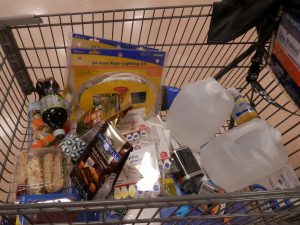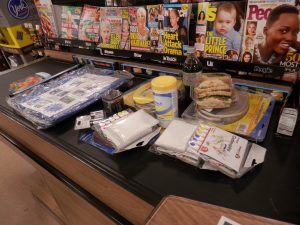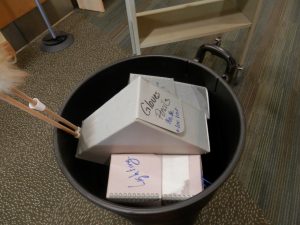Today is MayDay. While some think of it as the first day of May and a way to celebrate Spring activities, in the archives world it is a day designated to do something significant to protect archival collections in the case of a disaster. It is a day for archivists and other cultural heritage professionals to take the time and do something in their institution that can be accomplished in a day, something significant enough that it can help a repository’s response in the case of a disaster. It could be as easy as moving boxes from the floor and putting them on shelves, or as complex as writing a disaster plan. Every step you take to make your institution better prepared for a disaster is an important one. We in the UAA/APU Archives decided to take a look at our disaster kit, determine what we would need in the event of a disaster, and then buy some of the supplies we would need.
In other words, we went shopping.
Almost all forms of disasters end in water damage: floods and storms, bursting pipes, sprinkler system malfunctions, fire suppressants, and roof leaks to name a few. When writing our list of desired materials, we took this into consideration. At the beginning of the week Arlene, Jay, and I assessed what we have in our disaster kit and then came up with items we would need to purchase, item that could help us save our collections in the event of a disaster.
Items we already had:
- Flashlight
- Emergency radio
- Pencils
- Gloves
- Face masks
- Water-absorbing towels
- Safety glasses
- Lab coats
- Cameras
- Clothesline (a great tool to dry paper)
- Location list of collections
- Plastic tubs
- Garbage cans
- Mag-liner
- Ladders
- Basic toolkit
Items we decided we needed:
- Batteries for flashlights
- Garbage bags
- Plastic clothes pins
- Plastic tarps
- Utility knives
- Non-electric pencil sharpener
- Grease pencils
- Duct tape
- Lantern
- Notebook for inventory of supplies
- Plastic rain ponchos
- 2 bottles of distilled water (for rinsing purposes)
- Thumb drive (designated for have an electronic back-up copy of location list)
- Ear plugs (available at the Access Services Desk in the Library)
- Door props
- Rope lighting
We decided to meet at Fred Meyer to buy the needed supplies at 8:00 this morning. Of course, our first stop was Starbucks for coffee.
And then we had to inspect our list.
Next we went on our journey in search of the items for our kit. The only item we were unable to find were grease pencils. We also added rope lighting to our list after seeing it and determining it could be of use. And of course, it was nice to see many of the items on our list on sale.
The total cost of our items was $100.82, a small price to pay for being better prepared. Once we returned to the Archives, we decided to sort the materials by dividing them into boxes and placing the boxes in our kit. We also saved our location list to our new thumb drive. Since not all supplies live in the big garbage can, we also added our list to our inventory notebook to be kept at the Reference Desk so when disaster strikes, we know at a glance where everything is.
And so that concludes our MayDay. We definitely feel better prepared. Now we just hope we never have to use them!











